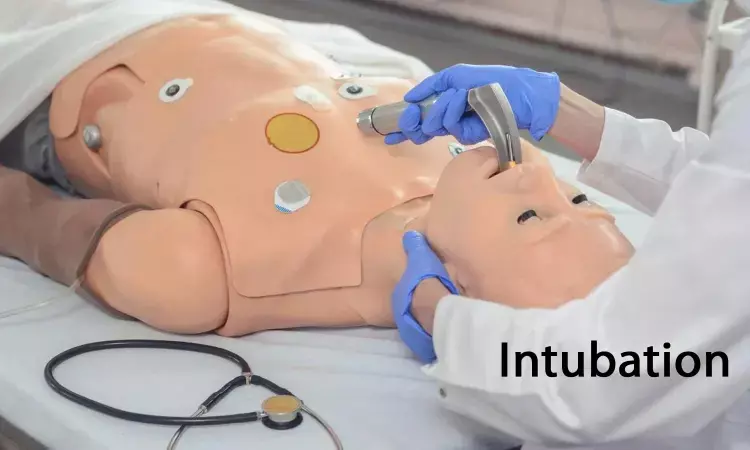- Home
- Medical news & Guidelines
- Anesthesiology
- Cardiology and CTVS
- Critical Care
- Dentistry
- Dermatology
- Diabetes and Endocrinology
- ENT
- Gastroenterology
- Medicine
- Nephrology
- Neurology
- Obstretics-Gynaecology
- Oncology
- Ophthalmology
- Orthopaedics
- Pediatrics-Neonatology
- Psychiatry
- Pulmonology
- Radiology
- Surgery
- Urology
- Laboratory Medicine
- Diet
- Nursing
- Paramedical
- Physiotherapy
- Health news
- Fact Check
- Bone Health Fact Check
- Brain Health Fact Check
- Cancer Related Fact Check
- Child Care Fact Check
- Dental and oral health fact check
- Diabetes and metabolic health fact check
- Diet and Nutrition Fact Check
- Eye and ENT Care Fact Check
- Fitness fact check
- Gut health fact check
- Heart health fact check
- Kidney health fact check
- Medical education fact check
- Men's health fact check
- Respiratory fact check
- Skin and hair care fact check
- Vaccine and Immunization fact check
- Women's health fact check
- AYUSH
- State News
- Andaman and Nicobar Islands
- Andhra Pradesh
- Arunachal Pradesh
- Assam
- Bihar
- Chandigarh
- Chattisgarh
- Dadra and Nagar Haveli
- Daman and Diu
- Delhi
- Goa
- Gujarat
- Haryana
- Himachal Pradesh
- Jammu & Kashmir
- Jharkhand
- Karnataka
- Kerala
- Ladakh
- Lakshadweep
- Madhya Pradesh
- Maharashtra
- Manipur
- Meghalaya
- Mizoram
- Nagaland
- Odisha
- Puducherry
- Punjab
- Rajasthan
- Sikkim
- Tamil Nadu
- Telangana
- Tripura
- Uttar Pradesh
- Uttrakhand
- West Bengal
- Medical Education
- Industry
Hyomental Distance Ratio- New Predictor of Difficult Laryngoscopy

Endotracheal intubation in settings such as the intensive care unit (ICU) is often linked with dangers and varies from intubation in the operating room for a variety of reasons. However, examination of the airway prior to intubation is contingent on a number of clinical characteristics with differing prognoses for difficult airways. Recent research aimed to investigate the use of the Hyomental distance ratio (HMDR) in predicting laryngoscopy difficulty for ICU patients.
In this research, 104 critically sick, 18-to-70-year-old ICU patients undergoing tracheal intubation were included. The hyomental distance was determined by pressing a hard plastic ruler on the skin surface immediately above the hyoid bone and measuring the distance to the tip of the anterior-most portion of the mentum (HMD). The HMD was evaluated in both the neutral and extended head positions, and the HMDR was computed. An expert anesthesiologist sedated, pre-oxygenated, induced, and relaxed all patients prior to glottic visualization by direct laryngoscopy. The grade of Cormack-Lehane (CL) was determined without external laryngeal manipulation. The treatment continued according to ICU procedure. Using the Chi-Square test for statistical analysis, it was determined that the p-value of HMDR in evaluating difficult laryngoscopy was less than 0.001, indicating a high level of significance. With a p-value of 0.047, HMD in the extended head position (HDMe) demonstrated modest significance. HMDR 1.2 is a clinically valid individual predictor of laryngoscopy difficulty in ICU patients.
In this research, HMDR had the best sensitivity (88.5 percent) for predicting DVL, followed by HMDn (80.8 percent ). In this investigation, HMDR had the highest specificity, followed by HMDe. In contrast to several investigations where specificity was greater for all HMD parameters, the specificity of these recordings is lower. The total accuracy of HMDR in predicting laryngoscopy difficulties is 86.5 percent, and HMDR is statistically significant with p0.001.
In the critical care setting, we find that HMDR is one of the most reliable and accurate predictors of DVL. HMDR 1.2 may serve as a test threshold. Even though the HMDR is a solid predictor, we would recommend combining it with additional tests, if possible, rather than using it alone.
Reference –
Hrithma D, K R, Mahadevaiah D, et al. (May 28, 2022) A Cross-Sectional Study on Hyomental Distance Ratio (HMDR) as a New Predictor of Difficult Laryngoscopy in ICU Patients. Cureus 14(5): e25435. doi:10.7759/cureus.25435
MBBS, MD (Anaesthesiology), FNB (Cardiac Anaesthesiology)
Dr Monish Raut is a practicing Cardiac Anesthesiologist. He completed his MBBS at Government Medical College, Nagpur, and pursued his MD in Anesthesiology at BJ Medical College, Pune. Further specializing in Cardiac Anesthesiology, Dr Raut earned his FNB in Cardiac Anesthesiology from Sir Ganga Ram Hospital, Delhi.
Dr Kamal Kant Kohli-MBBS, DTCD- a chest specialist with more than 30 years of practice and a flair for writing clinical articles, Dr Kamal Kant Kohli joined Medical Dialogues as a Chief Editor of Medical News. Besides writing articles, as an editor, he proofreads and verifies all the medical content published on Medical Dialogues including those coming from journals, studies,medical conferences,guidelines etc. Email: drkohli@medicaldialogues.in. Contact no. 011-43720751


